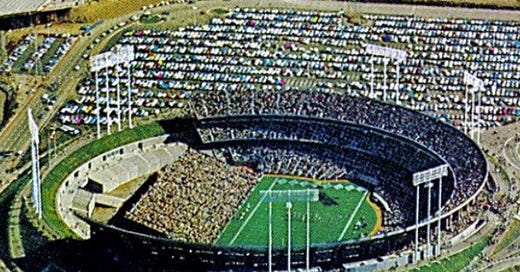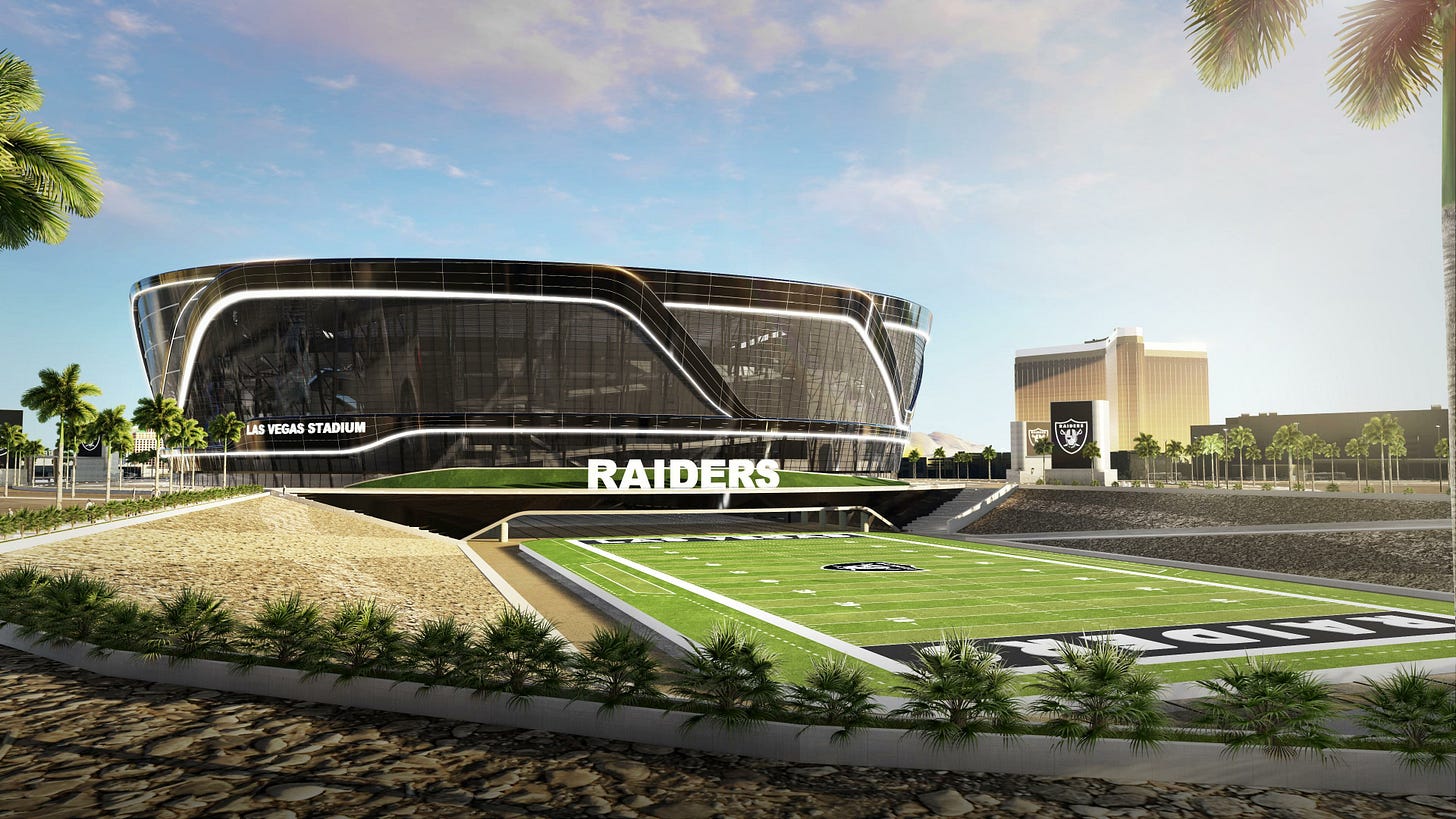Independence Day Salute to Al Davis
Born on Fourth of July, he took on NFL and won freedom for owners.
(This is our 2025 version of an annual tribute to one of the most important and misrepresented men in the history of pro football. Have an awesome Fourth of July.)
This Fourth of July, on what would have been his 96th birthday — America’s 249th Independence Day — the Al Davis Torch at Allegiant Stadium should burn brighter than ever, honoring the owner who liberated franchise power.
Although most owners were loath to admit it, every one has since feasted on the fruits of Davis’ gamble.
It marks the birthday of the man who took on the league’s iron grip and created a new era of independence — freedom that sent franchise values soaring from mere millions to billions.
Al Davis (born July 4, 1929) waged a very uncivil war that set the legal precedent for teams to move — or threaten to do so — as leverage in stadium negotiations. We’ll skip how he rose from Raiders head coach (1963) to AFL commissioner (1966) and instead focus on how he created “Independence Day” for franchise owners.
The Coliseum clash and antitrust triumph
In 1980, Davis demanded luxury boxes at the Oakland–Alameda County Coliseum, convinced the added revenue was vital once true player free agency arrived. When county officials balked — and the NFL voted down his secret L.A. relocation plan — Davis sued.
1. He joined the Los Angeles Coliseum in an antitrust suit against the league.
2. After a May 1982 mistrial, a second jury ruled for Davis, clearing the way for the Raiders’ 1982 move to Los Angeles.
That landmark victory didn’t just free the Raiders — it established Owner Free Agency.
Beneficiaries of owner free agency
Since Davis’ win, nearly every franchise has wielded the relocation threat as a stadium-negotiating chip:
1. Seattle Seahawks: Floated Portland in the late ’90s for a sweetheart SoDo (south of downtown) lease.
2. Tampa Bay Buccaneers: Teased Orlando in ’95 before winning Raymond James Stadium.
3. Cincinnati Bengals: Hinted at leaving Hamilton County, clinching Paul Brown Stadium funding.
4. Chicago Bears: Floated Arlington, Texas, to force Soldier Field upgrades.
5. Arizona Cardinals: Leveraged relocation whispers to build State Farm Stadium (2006).
6. Tennessee Titans (Oilers): Warned Nashville of moving to Jacksonville, then landed Nissan Stadium (1999).
7. Cleveland Browns: Owner Art Modell’s move to Baltimore in 1996 spurred a new Browns Stadium three years later. Cleveland’s sensational fan base held on to the team name, records and Dawg Pound fervor.
8. Rams (L.A. ⇄ St. Louis): Twice used market threats to secure both Edward Jones Dome (St. Louis) and Los Angeles’ SoFi Stadium. (Note: There wasn't a market threat for the move back to LA. Kroenke never requested a new stadium. He simply put in place the plan to privately build SoFi and was allowed to move even though STL had a viable stadium plan. That's why the move cost the league $790 million for St. Louis).
9. Chargers (San Diego/Los Angeles): Decades of posturing culminated in SoFi Stadium (2020).
10. Minnesota Vikings: Teased Los Angeles options to win U.S. Bank Stadium funding (2016).
11. Jacksonville Jaguars: Whispered an L.A. move to fund riverfront renovations (2003).
12. Miami Dolphins: Threatened Orlando/downtown Miami to secure Hard Rock Stadium’s multiphase overhaul.
13. New York Jets and Giants: Combined relocation leverage for MetLife Stadium’s cost and revenue-sharing model.
14. Washington Commanders: Used FedEx Field-exit talk to extract improvements from D.C. and Maryland.
15. Buffalo Bills: Flirted with Toronto to drive New York’s multi-hundred-million-dollar stadium overhaul.
🏈🏈🏈 Davis in Brief 🏈🏈🏈
> • 1929: Born July 4 in Brockton, MA
> • 1963: Hired as Raiders head coach; flipped a 1–13 team to 10–4 in one season
> • 1963: Refused to play in segregated Jackson, MS—in solidarity with receiver Art Powell’s stand against Jim Crow injustices
> • 1966: Served as AFL commissioner and was key in engineering the AFL–NFL merger
> • 1972: Became Raiders principal owner and general manager; coined “Just win, baby,” among others, including “Commitment to Excellence”.
> • 1979: Hired Tom Flores, first Latino head coach.
> • 1982: Won his landmark antitrust suit, giving birth to “owner free agency”
> • 1987–96: Hired Amy Trask, first female chief executive in modern pro sports
> • 1989: Hired Art Shell, first modern-era Black head coach in the NFL
> • 1992: Inducted into the Pro Football Hall of Fame
> • 2011: Passed away October 8; honored daily with the Memorial Torch at Allegiant Stadium
From millions to billions: the valuation explosion
When Davis sued in the early 1980s, NFL franchises typically traded for $20–25 million each, and the league’s combined value hovered around $600 million. Today, the average team is worth approximately $5.7 billion, pushing the league’s total valuation past $180 billion. That staggering growth underscores how owner-free agency turned football clubs into some of the world’s richest real estate assets.
The ironic twist
Davis pressed to move because he foresaw true player free agency — but in the process, he unlocked ownership free agency. Ironically, he never fully capitalized on it himself: Blocked in L.A., he returned the Raiders to Oakland in 1995, and chased a stadium deal until the franchise finally relocated to Las Vegas in 2020 — nine years after his passing.
A flame that still burns
Every game day at Allegiant Stadium in Las Vegas, the Al Davis Memorial Torch is lit — a fitting ritual for the man whose defiance reshaped the business of football. This Fourth of July, let that torch burn not just for America’s freedom, but for the independence Davis’ fight won for every NFL owner.









